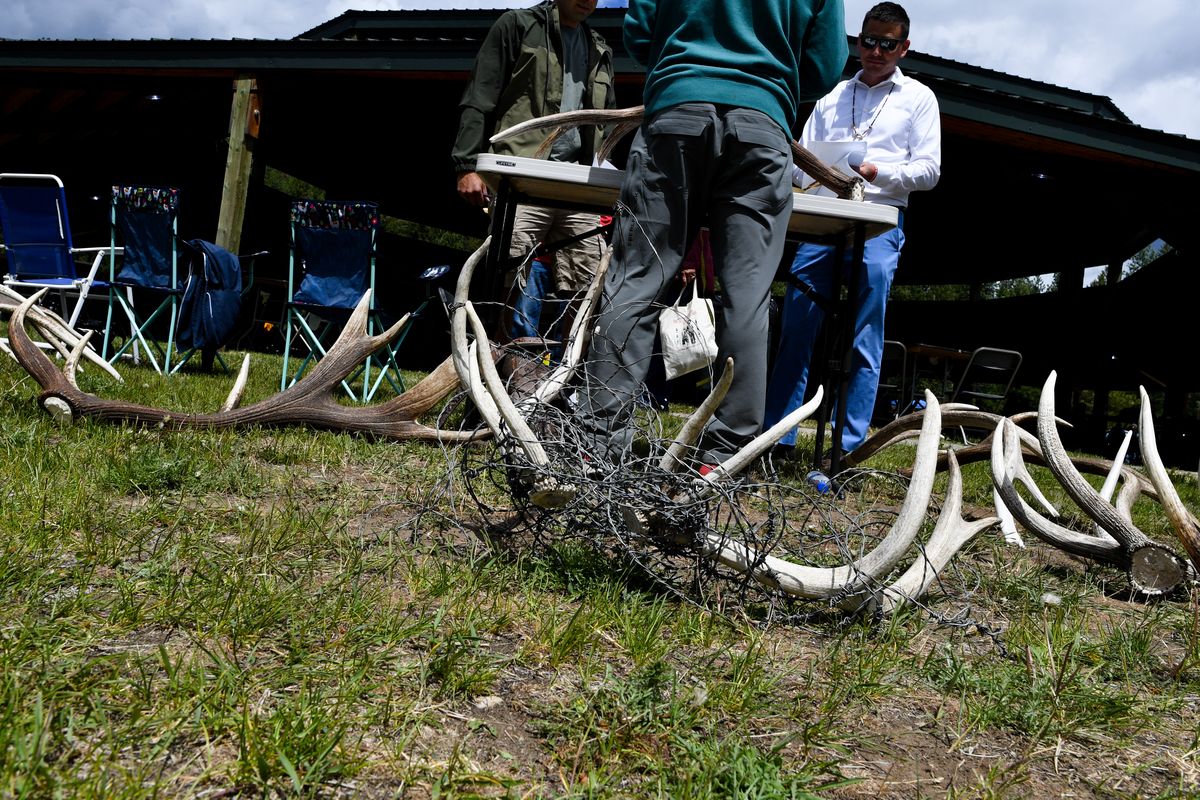‘We’ve been here forever, and we’re going to be here forever’: Colville Tribes celebrate Sinixt people’s victory in Canada’s Supreme Court

INCHELIUM, Wash. – Hundreds of members of the Colville Tribes gathered under the dance arbor at Round Lake on Friday to celebrate the Canadian Supreme Court ruling a month earlier that recognized the Sinixt people, decades after Canada’s government declared them extinct.
The event, held at the start of Memorial Day weekend, paid tribute to the generations of Sinixt who fought for recognition after the 1956 “declaration of extinction,” including many who were not alive to see the April 23 ruling that affirmed their hunting rights on their ancestral land in what is now British Columbia.
“We owe a great deal of thanks to a great many people, including our ancestors,” Rodney Cawston, chairman of the Colville Business Council, said at the start of the event. “There’s a lot of work ahead, but this is a huge victory for our people, particularly our young people who can return to their land.”
The Sinixt, also known as the Arrow Lakes Band, are one of the 12 Confederated Tribes of the Colville Reservation. Their traditional territory, which includes parts of present-day northeastern Washington and southeastern B.C., was cut in two by the U.S.-Canada border in the 19th century.
The Canadian government recognized the Sinixt in the early 1900s as a First Nation – the legal equivalent of an American Indian Tribe – but declared them extinct after their last known member died, rescinding the rights guaranteed to Indigenous people under Canadian law.
The court case that effectively reversed that declaration began in 2010, when Rick Desautel, then an employee of the Colville Tribes’ Fish and Wildlife Department, killed a cow elk on traditional Sinixt land near Vallican, B.C.
After a B.C. court ruled in 2017 that Desautel had a constitutionally protected right to kill the animal as a Sinixt tribal member, the case was appealed to the B.C. Supreme Court and eventually the Supreme Court of Canada, which upheld the original decision.
For many at Friday’s celebration outside Inchelium, the justices’ 7-2 decision was an inflection point in a long history of erasure of Indigenous people by European immigrants.
“I put this in the context of what’s happened in North America over the last 500 years,” said Sulustu, a Spokane tribal member also known as Barry Moses. “There’s been this almost irresistible force that has constantly tried to extinguish Native rights to land, to identity, to our ceremonies, to our language, to our spirituality.”
“You look at an entire civilization of people that has been brought to the edge of extinction – and in this case declared legally ‘extinct,’” he said. “To have that reversed, I just can’t say enough about what that feels like.”
When Desautel shot the elk in 2010, it was no spur-of-the-moment decision. Planning for the hunt began as far back as 1989, when Sinixt and other tribal members, include a teenaged Sulustu, crossed the border to protest a plan to build a highway through Sinixt burial grounds near Vallican.
While the blockade ultimately failed and the road was completed, it galvanized an effort to gain recognition for the Sinixt in B.C. that ultimately led tribal leaders to choose a strategy of challenging the extinction declaration by hunting, to which First Nations are guaranteed rights under Canada’s constitution.
Over the course of several months, tribal officials met frequently with B.C. conservation authorities and Canadian border patrol officials to understand exactly how Desautel would conduct the hunt to trigger a successful court case.
“You had to check each box,” said Joe Peone, the Tribes’ director of fish and wildlife who served in the same role at the time. “And one of the boxes was to get Ricky up there to hunt safely and return safely with the food.”
After determining what was required to cross back into the U.S. legally, including skinning the elk and labeling its parts in a cooler, Desautel and his wife, Linda, had a successful hunt and he turned himself in to be cited by Canadian authorities.
Shelly Boyd – a Sinixt member who has served since 2016 as Arrow Lakes facilitator, a position created by the Colville tribal council in 2009 to coordinate advocacy efforts across the border – said despite all the preparation, victory in the Canadian courts was never guaranteed.
“We always knew it was kind of a David-and-Goliath thing,” Boyd said. “I don’t want to say we expect to lose – we’re going to keep trying – but we’d been trying for more than 100 years. Why wouldn’t we expect to lose?”
Cawston said he is excited by the possibilities the court ruling could open up, including potential dual citizenship or full status as a First Nation in Canada. He also hopes it could help bring together Sinixt people who have come to identify with one side of the border or the other.
“I think about my grandma, and she never said that,” Cawston said. “She said ‘kn Sinixt’ – ‘I am Sinixt.’ To her, we were all one and the same.”
Linda Desautel said she and Rick are planning a trip to Sinixt territory in B.C. with their kids and grandkids, some of whom have never seen their ancestral lands, once COVID-19 restrictions at the U.S.-Canada border are lifted.
“I feel like a huge weight’s lifted,” she said. “I never, ever lost faith.”
Before leading a “walk with the ancestors” to remember those who have fought for recognition for the Sinixt, Sulustu said a prayer in Salish and in English.
“We’ve been here forever,” he concluded, “and we’re going to be here forever.”